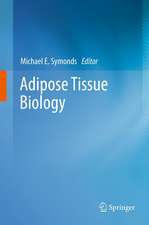High Altitude Physiology and Medicine: Topics in Environmental Physiology and Medicine
Editat de W. Brendel, R. A. Zinken Limba Engleză Paperback – 3 oct 2011
Preț: 722.69 lei
Preț vechi: 760.73 lei
-5% Nou
Puncte Express: 1084
Preț estimativ în valută:
138.31€ • 143.86$ • 114.18£
138.31€ • 143.86$ • 114.18£
Carte tipărită la comandă
Livrare economică 14-28 aprilie
Preluare comenzi: 021 569.72.76
Specificații
ISBN-13: 9781461256410
ISBN-10: 1461256410
Pagini: 340
Ilustrații: 316 p.
Dimensiuni: 178 x 254 x 18 mm
Greutate: 0.59 kg
Ediția:Softcover reprint of the original 1st ed. 1982
Editura: Springer
Colecția Springer
Seria Topics in Environmental Physiology and Medicine
Locul publicării:New York, NY, United States
ISBN-10: 1461256410
Pagini: 340
Ilustrații: 316 p.
Dimensiuni: 178 x 254 x 18 mm
Greutate: 0.59 kg
Ediția:Softcover reprint of the original 1st ed. 1982
Editura: Springer
Colecția Springer
Seria Topics in Environmental Physiology and Medicine
Locul publicării:New York, NY, United States
Public țintă
ResearchCuprins
I: Physiology of Adaptation.- Oxygen Uptake in the Lungs.- 1. Sleep Hypoxemia at Altitude.- 2. O2 Breathing at Altitude: Effects on Maximal Performance.- 3. Oxygen Uptake at High Altitude: Limiting Role of Diffusion in Lungs.- 4. Respiratory and Cardiocirculatory Responses of Acclimatization of High Altitude Natives (La Paz, 3500 m) to Tropical Lowland (Santa Cruz, 420 m).- 5. Chemoreflex Ventilatory Responses at Sea Level in Subjects with Past History of Good Acclimatization and Severe Acute Mountain Sickness.- 6. Dysoxia (Abnormal Cell O2 Metabolism) and High Altitude Exposure.- Oxygen Affinity and Oxygen Unloading.- 7. Minimal $${{\text{P}}_{{O_2}}}$$in Working and Resting Tissues.- 8. Effects of High Altitude (Low Arterial $${{\text{P}}_{{O_2}}}$$) and of Displacements of the Oxygen Dissociation Curve of Blood on Peripheral O2 Extraction and $${{\text{P}}_{{O_2}}}$$.- 9. Influence of the Position of the Oxygen Dissociation Curve on the Oxygen Supply to Tissues.- 10. Carbon Dioxide and Oxygen Dissociation Curves During and After a Stay at Moderate Altitude.- Hypoxia and Anaerobic Metabolism.- 11. Ventilatory, Circulatory, and Metabolic Mechanisms During Muscular Exercise at High Altitude (La Paz, 3500 m).- 12. The Effects of Hypoxia on Maximal Anaerobic Alactic Power in Man.- 13. Anaerobic Metabolism at High Altitude: The Lactacid Mechanism.- 14. Oxygen Deficit and Debt in Submaximal Exercise at Sea Level and High Altitude.- Flow Distribution and Oxygen Transport.- 15. Blood Rheology in Hemoconcentration.- 16. Oxygen Transport Capacity.- 17. Skeletal Muscle Perfusion, Exercise Capacity, and the Optimal Hematocrit.- 18. Cardiac Output and Regional Blood Flows in Altitude Residents.- 19. The Pulmonary Circulation of High Altitude Natives.- 20. Comparison Between Newcomer Rats and First Generation of Rats Born at High Altitude, Particularly Concerning the Oxygen Supply to the Heart.- 21. Circulatory Flow of Oxygen Returning to the Lung During Submaximal Exercise in Altitude Residents.- 22. Effect of the ?-Adrenergic Blocking Agent Phentolamine (Regitine) on Acute Hypoxic Pulmonary Hypertension in Awake Dogs.- Hormonal, Hematologic, and Electrolyte Changes.- 23. Hormonal Responses to Exercise at Altitude in Sea Level and Mountain Man.- 24. Time Course of Plasma Growth Hormone During Exercise in Man at Altitude.- 25. Transcapillary Escape Rate of Albumin After Exposure to 4300 m.- 26. Platelet Survival and Sequestration in the Lung at Altitude.- 27. Electrolyte Changes in the Blood and Urine of High Altitude Climbers.- 28. The Influence of Trekking on Some Hematologic Parameters and Urine Production.- II: Disturbances Due to High Altitude and Therapy of High Altitude Complaints.- Cerebral and Ophthalmologic Changes.- 29. High Altitude Complaints, Diseases, and Accidents in Himalayan High Altitude Expeditions (1946–1978).- 30. Cerebral Edema: The Influence of Hypoxia and Impaired Microcirculation.- 31. Physiologic Adaptation to Altitude and Hyperexis.- 32. Eye Problems at High Altitudes.- 33. Cotton-Wool Spots: A New Addition to High Altitude Retinopathy.- High Altitude Pulmonary Edema.- 34. High Altitude Pulmonary Edema: Analysis of 166 Cases.- 35. Hemodynamic Study of High Altitude Pulmonary Edema (12,200 ft).- 36. Pathogenesis of High Altitude Pulmonary Edema (HAPE).- 37. Subclinical Pulmonary Edema with Hypobaric Hypoxia.- 38. Mechanism of Pulmonary Edema Following Uneven Pulmonary Artery Obstruction and Its Relationship to High Altitude Lung Injury.- 39. Vasopressin in Acute Mountain Sickness and High Altitude Pulmonary Edema.-40. Hypoxic Pulmonary Vasoconstriction and Ambient Temperature.- 41. Pathophysiology of Acute Mountain Sickness and High Altitude Pulmonary Edema: An Hypothesis.- 42. Use of Furosemide in Prevention of HAPE.- Chronic Mountain Sickness and Performance.- 43. Chronic Mountain Sickness: A Pulmonary Vascular Disease?.- 44. Predicting Mountaineering Performance at Great Altitudes.- 45. Effect of Ambient Temperature, Age, Sex, and Drugs on Survival Rate of Rats.- High Altitude Expeditions.- 46. Hemodilution: Practical Experiences in High Altitude Expeditions.- 47. How to Stay Healthy While Climbing Mount Everest.- 48. Proposals for International Standardization in the Research and Documentation of High Altitude Medicine.- 49. Equipment Requirements for High-Altitude Studies (Personal Experiences).


































